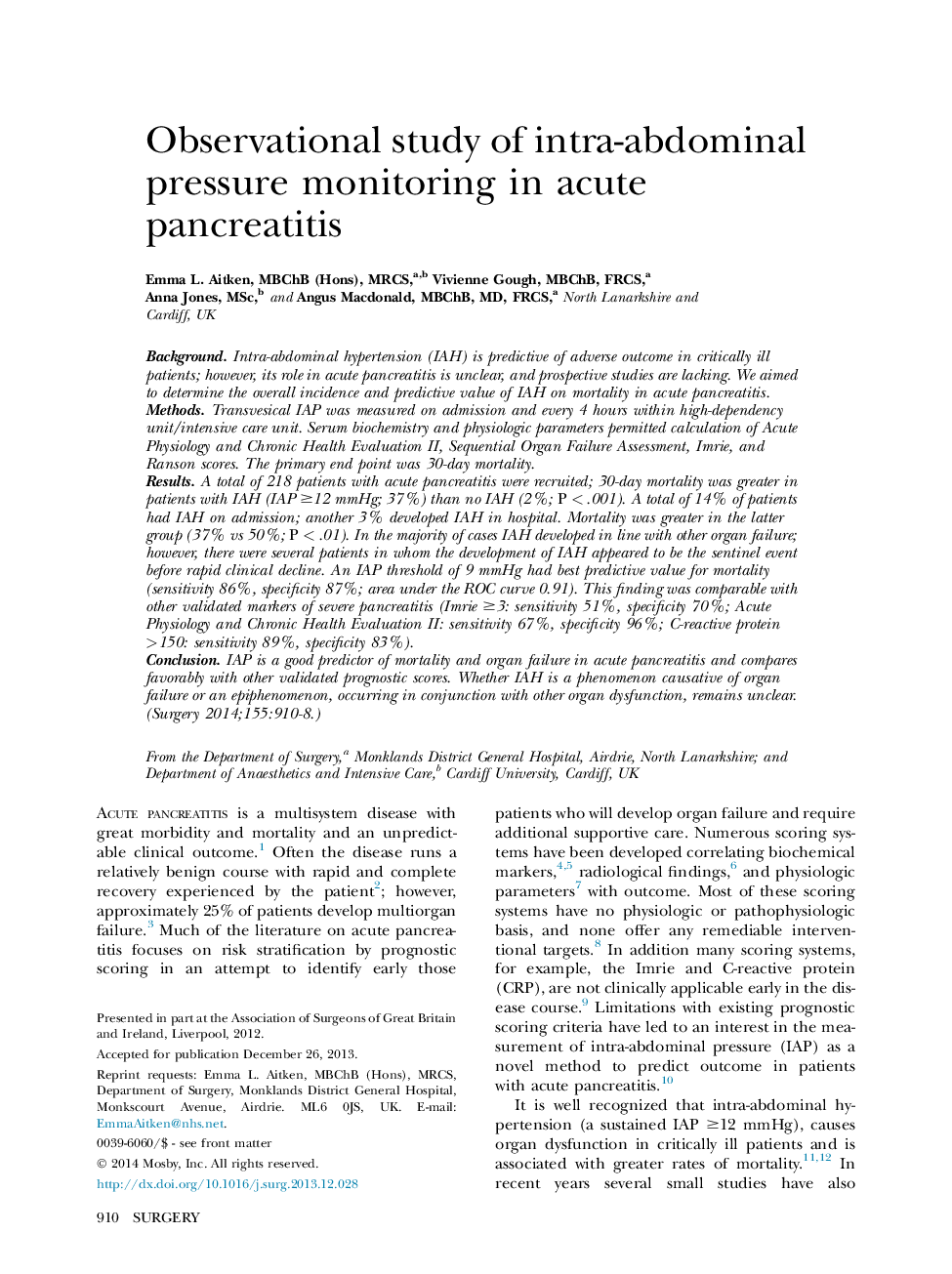| Article ID | Journal | Published Year | Pages | File Type |
|---|---|---|---|---|
| 4306548 | Surgery | 2014 | 9 Pages |
BackgroundIntra-abdominal hypertension (IAH) is predictive of adverse outcome in critically ill patients; however, its role in acute pancreatitis is unclear, and prospective studies are lacking. We aimed to determine the overall incidence and predictive value of IAH on mortality in acute pancreatitis.MethodsTransvesical IAP was measured on admission and every 4 hours within high-dependency unit/intensive care unit. Serum biochemistry and physiologic parameters permitted calculation of Acute Physiology and Chronic Health Evaluation II, Sequential Organ Failure Assessment, Imrie, and Ranson scores. The primary end point was 30-day mortality.ResultsA total of 218 patients with acute pancreatitis were recruited; 30-day mortality was greater in patients with IAH (IAP ≥12 mmHg; 37%) than no IAH (2%; P < .001). A total of 14% of patients had IAH on admission; another 3% developed IAH in hospital. Mortality was greater in the latter group (37% vs 50%; P < .01). In the majority of cases IAH developed in line with other organ failure; however, there were several patients in whom the development of IAH appeared to be the sentinel event before rapid clinical decline. An IAP threshold of 9 mmHg had best predictive value for mortality (sensitivity 86%, specificity 87%; area under the ROC curve 0.91). This finding was comparable with other validated markers of severe pancreatitis (Imrie ≥3: sensitivity 51%, specificity 70%; Acute Physiology and Chronic Health Evaluation II: sensitivity 67%, specificity 96%; C-reactive protein >150: sensitivity 89%, specificity 83%).ConclusionIAP is a good predictor of mortality and organ failure in acute pancreatitis and compares favorably with other validated prognostic scores. Whether IAH is a phenomenon causative of organ failure or an epiphenomenon, occurring in conjunction with other organ dysfunction, remains unclear.
